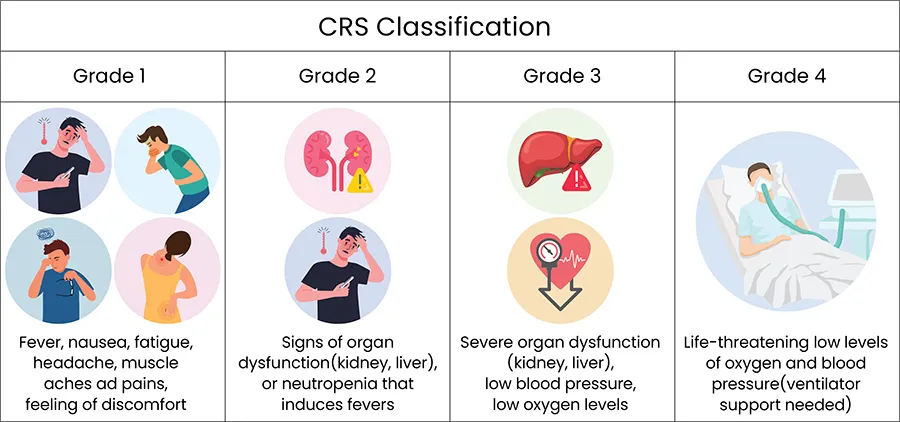Cytokine Release Syndrome (3/4)
How is CRS severity classified?

Grade 1
This is a mild reaction. It can present as fever, nausea, fatigue, headache, muscle aches and pains, or a general feeling of discomfort or uneasiness. Treatments usually include antipyretics (such as ibuprofen or aspirin) or antiemetics (for nausea or vomiting). Your treatment will not be interrupted.
Grade 2
This is a moderate reaction. There can be some signs of organ dysfunction (such as kidney or liver dysfunction), or neutropenia that induces fevers. Your team might put you on oxygen or give you liquid IVs. Your therapy could be interrupted at this time. Tocilizumab is a drug commonly used to treat CRS (cytokine release syndrome) and manage the side effects to keep it from progressing to Grades 3 or 4.
Grade 3
This is a severe reaction. Symptoms might include severe organ dysfunction (such as kidney or liver), low blood pressure that has been treated with intravenous fluids but is not resolving, or low oxygen levels. You will most likely be moved to the ICU at this time for observation and treatment and be placed on oxygen. Prolonged reactions will lead to stop the therapy completely.
Grade 4
These include life-threatening low levels of oxygen or blood pressure, there are life-threatening consequences, and ventilator support will need to be used at this time. Note that this is extremely rare in the case of bispecific antibody therapy for multiple myeloma treatment.